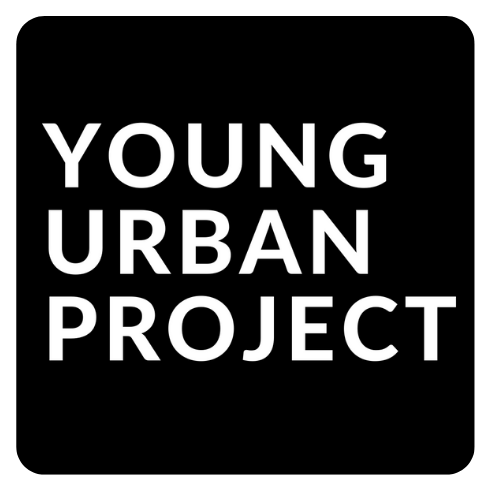In the ever-evolving world of performance marketing, staying ahead of the competition requires continuously improving your strategies. And at the heart of optimization lies testing. By leveraging the power of A/B testing and multivariate testing, you can unlock valuable insights into what resonates with your audience, drive higher conversions, and supercharge your marketing efforts.
In this comprehensive blog post, we will dive deep into the intricacies of A/B testing versus multivariate testing. We’ll explore real-world examples and provide advanced insights to help you understand when to use each methodology. By the end, you’ll have a solid grasp of these techniques and be equipped to make informed decisions to maximize the impact of your performance marketing campaigns.
Table of Contents
Why is Testing important in Digital & Performance Marketing
Before delving into the nuances of A/B testing vs multivariate testing, it’s important to understand the fundamental role that testing plays in performance marketing. Testing allows you to make data-driven decisions, refine your strategies, and optimize your campaign performance.
By experimenting with different variables and analyzing the results, you gain valuable insights into consumer behavior, preferences, and engagement patterns. This data-driven approach enables you to fine-tune your marketing efforts, drive higher conversion rates, and ultimately achieve your business goals.
Do you want to learn Performance Marketing from top industry experts who work with Google, Microsoft, Haptik, Linkedin, Dentsu, and more?
Click Here to Apply for our 10-Week Performance Marketing Course – a live, online program to learn the inside-out of the Performance Marketing industry. Get a high-paying job, grow any business, and scale your career.
In this post, we will understand two popular types of testing called A/B Testing (or Split Testing) and Multivariate Testing. Let’s dive in!

A/B Testing: Uncovering the Power of Variants
A/B testing, also known as split testing, is a method used in performance marketing to compare two versions of a marketing asset or experience to determine which one performs better. It allows marketers to test different variables and make data-driven decisions to optimize their campaigns and improve results.

How to conduct an A/B Test
- Understanding the Purpose: The primary goal of A/B testing is to identify the most effective variation of a particular element or feature. This could include testing different headlines, calls-to-action, layouts, colors, images, or any other component of a marketing asset. By comparing the performance of these variations, marketers can gain insights into what resonates best with their target audience.
- Setting Up the Test: To conduct an A/B test, marketers create two versions of their marketing asset: Version A (the control) and Version B (the variation). The control version represents the existing or original design, while the variation introduces a single change or modification. It’s crucial to change only one variable at a time to accurately measure the impact of that specific change.
- Splitting the Traffic: Next, the marketer splits their audience or traffic into two random groups. Group A is exposed to Version A, and Group B is exposed to Version B. It’s essential to ensure that the groups are comparable and that any external factors that could influence the results are evenly distributed between the groups.
- Collecting Data and Measuring Metrics: During the A/B test, data is collected to measure the performance of each version. The specific metrics to track depend on the marketing objective. For example, if the goal is to increase click-through rates on an email, the metrics to track would include open rates, click-through rates, and conversion rates.
- Analyzing Results and Drawing Conclusions: Once enough data has been gathered, the results are analyzed to determine which version performed better. Statistical significance is calculated to ensure that the observed differences are not due to chance. Marketers can then draw conclusions about which version is the most effective in achieving their goals.
- Implementing the Winning Variation: Based on the results of the A/B test, the marketer can confidently choose the winning variation and implement it as the new default version. This optimized version can lead to improved conversion rates, higher engagement, increased sales, or any other desired outcome.
- Iterating and Continuous Testing: A/B testing is an iterative process that should be repeated regularly to optimize marketing assets continually. By testing different variables and combinations, marketers can gradually refine their strategies and achieve ongoing improvement in performance.
Real-World A/B Testing Example 1: Website Conversion Optimization
Let’s say you operate an online clothing store and want to optimize your product page to increase conversions. With A/B testing, you can create two versions of the page, each featuring a different call-to-action button: one stating “Buy Now” and the other “Add to Cart.” By randomly assigning website visitors to either variant, you can measure their response and determine which call-to-action button yields higher conversion rates.
Real-World A/B Testing Example 2: Email Subject Line Testing
Email marketing is another area where A/B testing can be highly effective. Suppose you’re launching a promotional campaign for your e-learning courses and want to determine the optimal subject line. By sending two versions of the email—one with a subject line emphasizing a discount and the other emphasizing a limited-time offer—you can track open rates and click-through rates to identify the subject line that resonates better with your audience.
A/B testing provides valuable insights into the impact of a single variable, allowing you to make informed decisions and optimize your marketing assets for maximum effectiveness.
Multivariate Testing: Exploring Complex Interactions
Multivariate testing is a method used in performance marketing to test and analyze the combined impact of multiple variables on the performance of a marketing asset or experience. Unlike A/B testing, which focuses on comparing two versions by changing a single variable at a time, multivariate testing allows marketers to experiment with different combinations of variables simultaneously.

How to conduct a Multivariate Test
- Purpose and Objective: The main purpose of multivariate testing is to understand how different variables interact with each other and influence the overall performance of a marketing asset. It helps marketers identify the most effective combination of variables to optimize their campaigns and achieve desired outcomes.
- Identifying Variables: In multivariate testing, marketers select multiple variables to test simultaneously. These variables can include various elements such as headlines, images, colors, calls-to-action, layouts, forms, and more. It’s important to choose variables that are likely to have a significant impact on the desired outcome.
- Creating Variations: For each selected variable, marketers create different versions or variations. For example, if there are three variables being tested (A, B, and C), and each has two variations, there will be a total of 2x2x2 = 8 different combinations. These combinations represent the different versions that will be tested.
- Splitting Traffic and Randomizing: Similar to A/B testing, the audience or traffic is split randomly into different groups, with each group exposed to a specific combination or variation. This ensures that the testing is conducted on a representative sample and minimizes the impact of external factors.
- Collecting Data and Measuring Metrics: During the multivariate test, data is collected and relevant metrics are measured to evaluate the performance of each combination. The metrics can vary based on the marketing objective and may include click-through rates, conversion rates, engagement metrics, bounce rates, and more. Data analysis tools and statistical methods are used to derive insights from the collected data.
- Analyzing Results and Drawing Conclusions: Once sufficient data has been gathered, the results are analyzed to determine the most effective combination of variables. Statistical significance is calculated to validate the observed differences and ensure they are not due to chance. Marketers can then draw conclusions about which combination performs best and drives the desired outcomes.
- Implementing and Optimizing: Based on the results of multivariate testing, marketers can implement the winning combination or variation that demonstrates the highest performance. This optimized version can then be applied to improve marketing assets, increase conversions, enhance user experiences, and achieve better overall results.
- Continuous Iteration and Refinement: Multivariate testing is an ongoing process that requires continuous iteration and refinement. Marketers should continue testing different combinations and variables to refine their strategies, optimize their campaigns, and adapt to changing market dynamics.
Real-World Multivariate Example 1: Landing Page Optimization Imagine you’re running a lead generation campaign for your software product and want to optimize your landing page. With multivariate testing, you can experiment with various combinations of headline, hero image, form fields, testimonials, and call-to-action buttons. By randomly presenting different combinations to your website visitors, you can gather data on how these elements interact and determine the most effective combination that drives the highest conversion rates.
Real-World Multivariate Example 2: Ad Creatives and Copy Testing For your paid advertising campaigns, multivariate testing can be invaluable. Let’s say you’re running a campaign on Facebook and want to optimize your ad creatives and copy. By testing different combinations of images, headlines, descriptions, and calls-to-action, you can identify the winning combination that generates the highest click-through rates and conversions.
Multivariate testing provides a holistic understanding of how various elements interact, allowing you to optimize your marketing campaigns by identifying the most effective combination of variables.
A/B Testing vs Multivariate Testing – Choosing the right testing methodology
To make the most of your testing efforts, it’s important to understand when to use A/B testing and when to employ multivariate testing. Here are some key considerations:
A/B Testing:
- Use A/B testing when you want to test a single variable, such as headlines, call-to-action buttons, or colors.
- It is ideal when you have limited traffic or a smaller sample size.
- A/B testing allows you to quickly identify the impact of a specific element on your audience’s behavior.
Multivariate Testing:
- Use multivariate testing when you want to test multiple variables and their combined impact.
- It is suitable when you have substantial traffic and a larger sample size.
- Multivariate testing provides insights into how different elements interact, helping you optimize the overall performance of your marketing campaigns.
By strategically choosing the appropriate methodology based on your objectives, resources, and target audience, you can extract maximum value from your testing efforts.
Conclusion
Testing is the bedrock of data-driven optimization in digital and performance marketing. A/B testing and multivariate testing serve as powerful tools to unlock the potential of your marketing campaigns.
By using these methodologies, you can uncover valuable insights, enhance customer experiences, and drive higher conversions.
Remember to continuously iterate, test, and refine your marketing strategies. Leverage the power of A/B testing and multivariate testing to make informed decisions that propel your digital and performance marketing efforts to new heights.
With a data-driven mindset and a commitment to optimization, you’ll be well on your way to achieving remarkable results in your performance marketing endeavors.
New here? Follow us on Instagram and Subscribe to our YouTube Channel.






